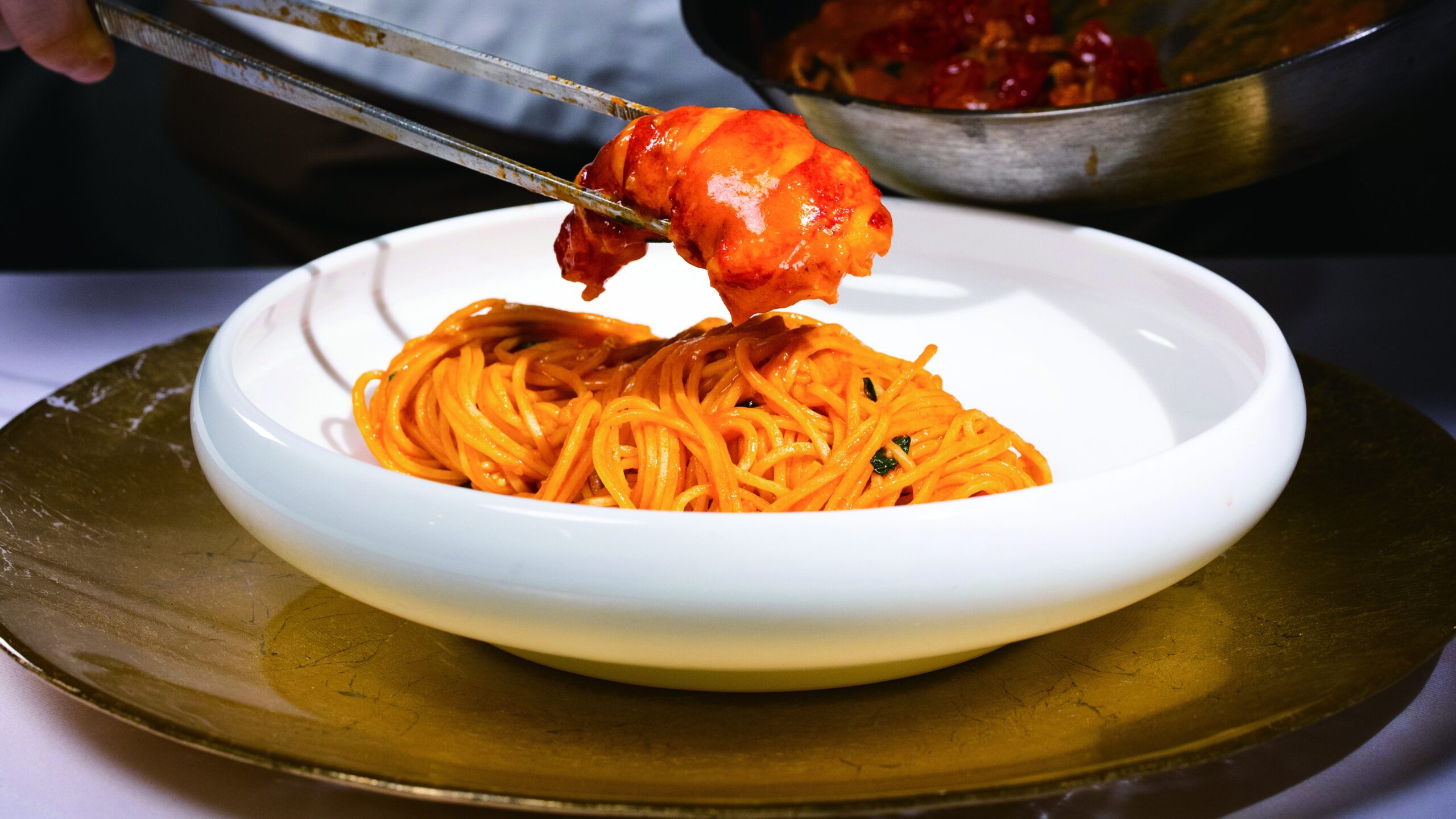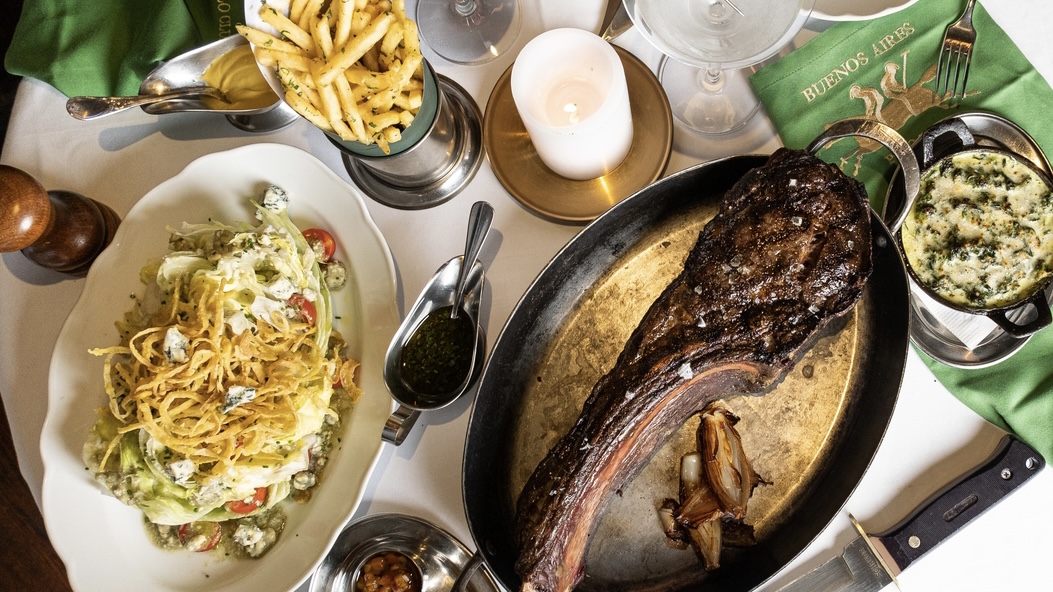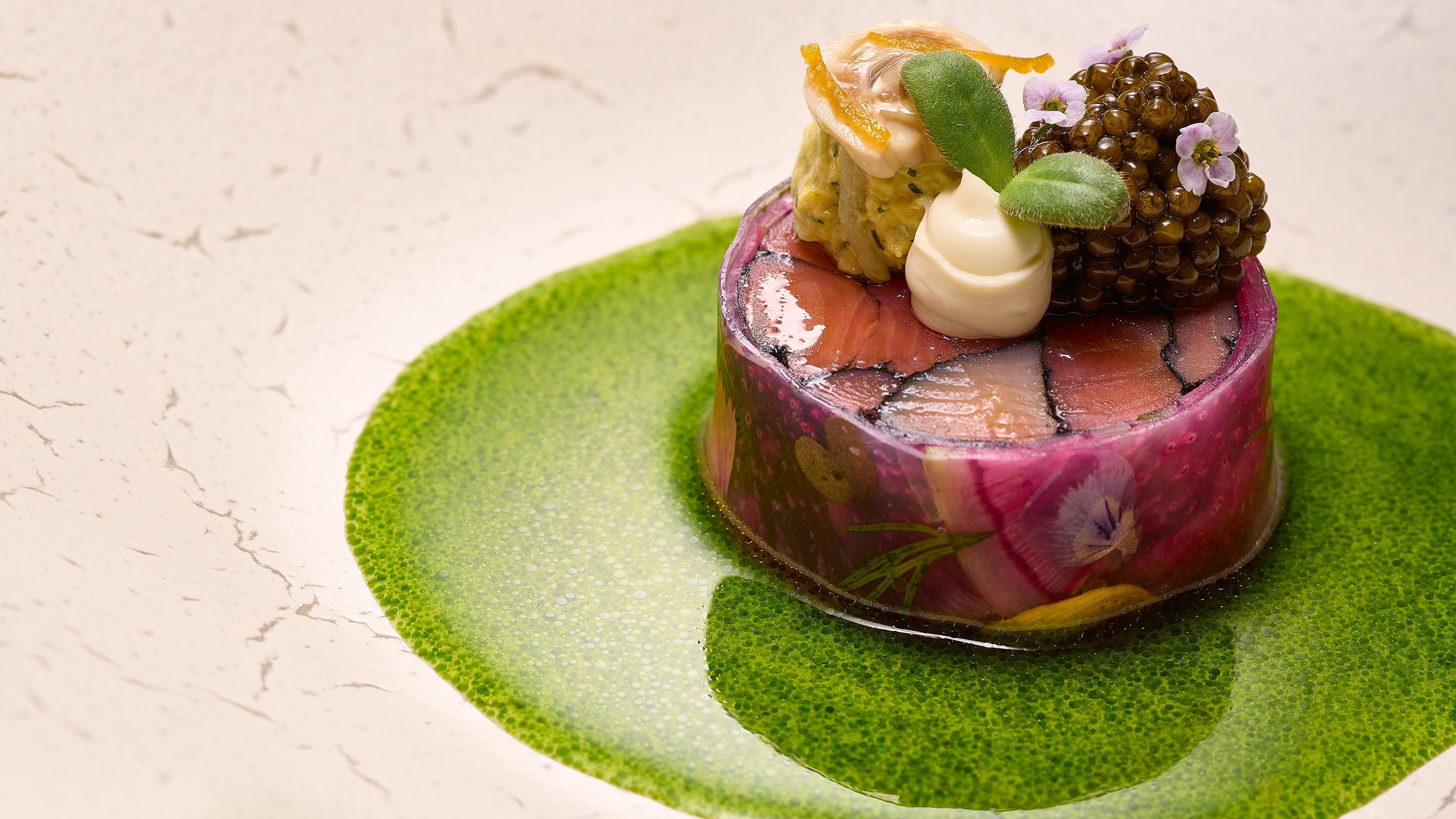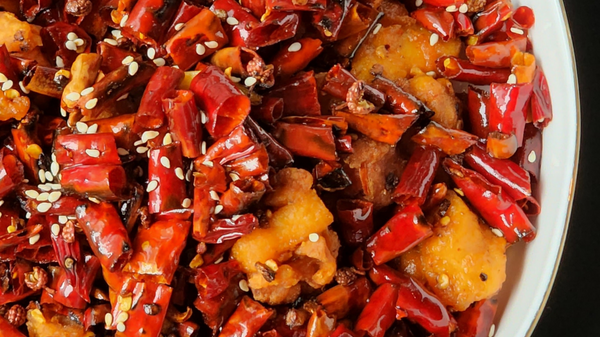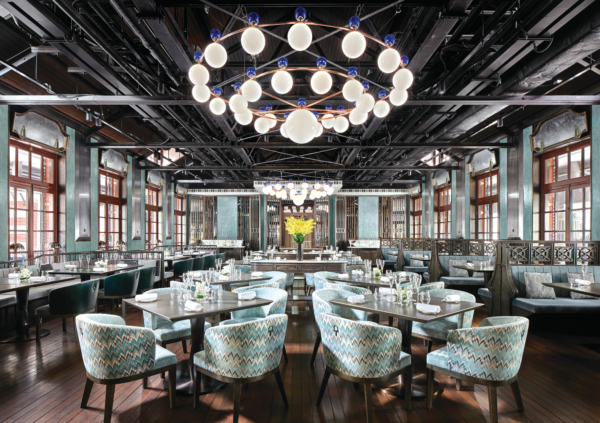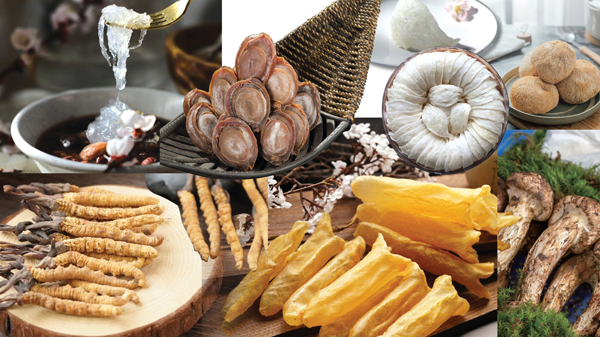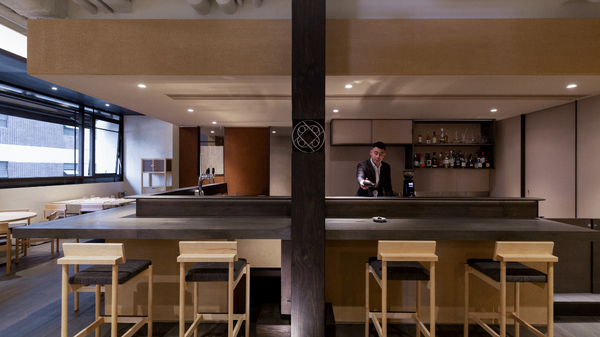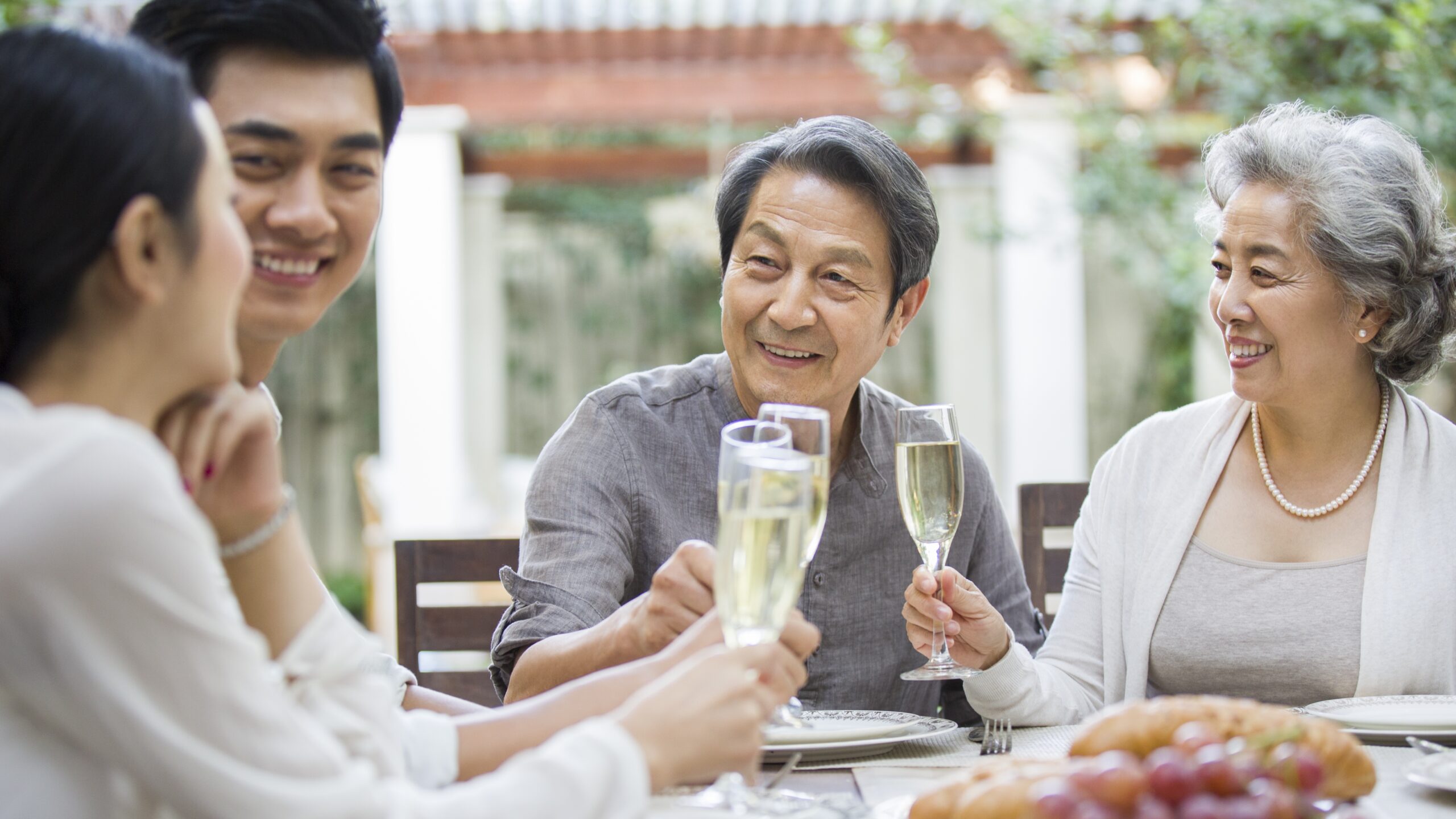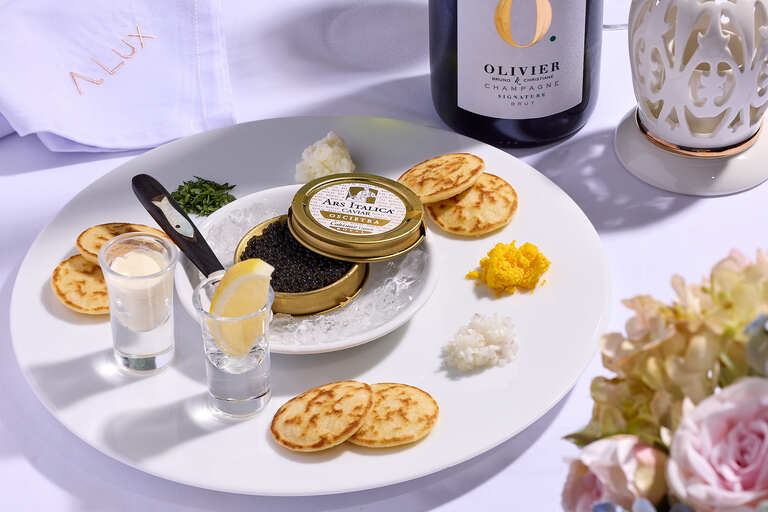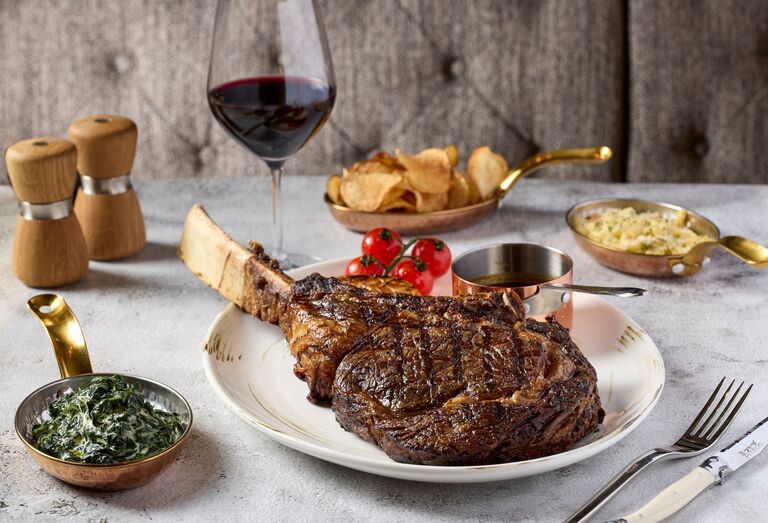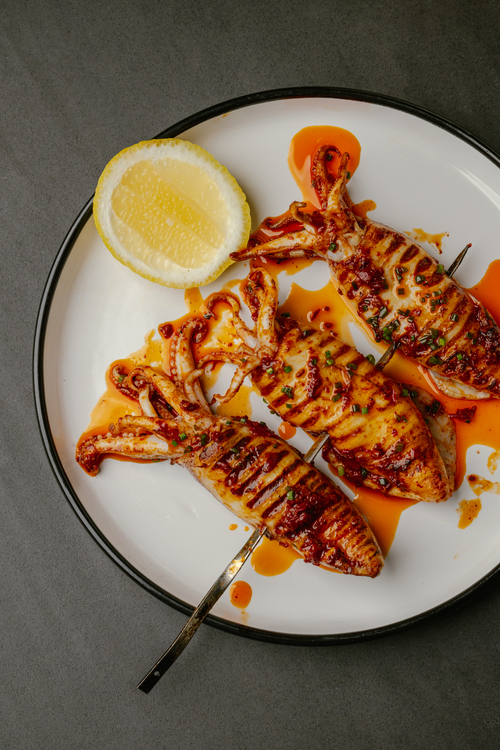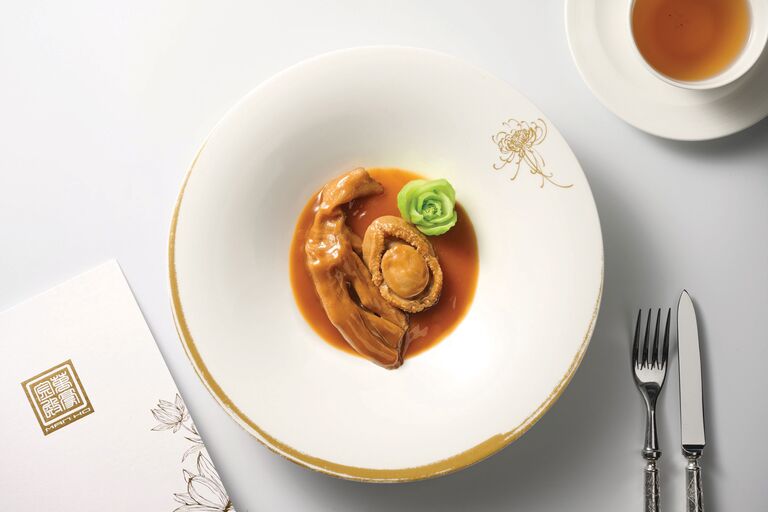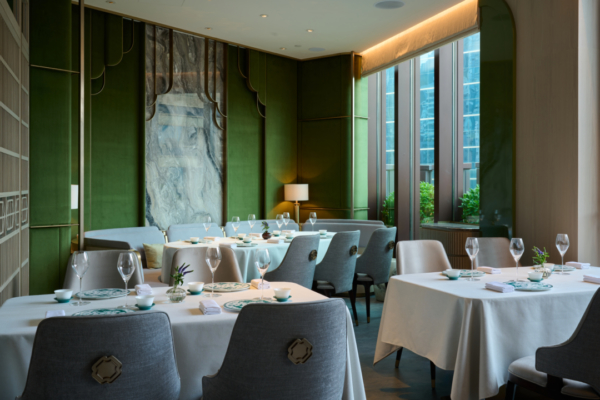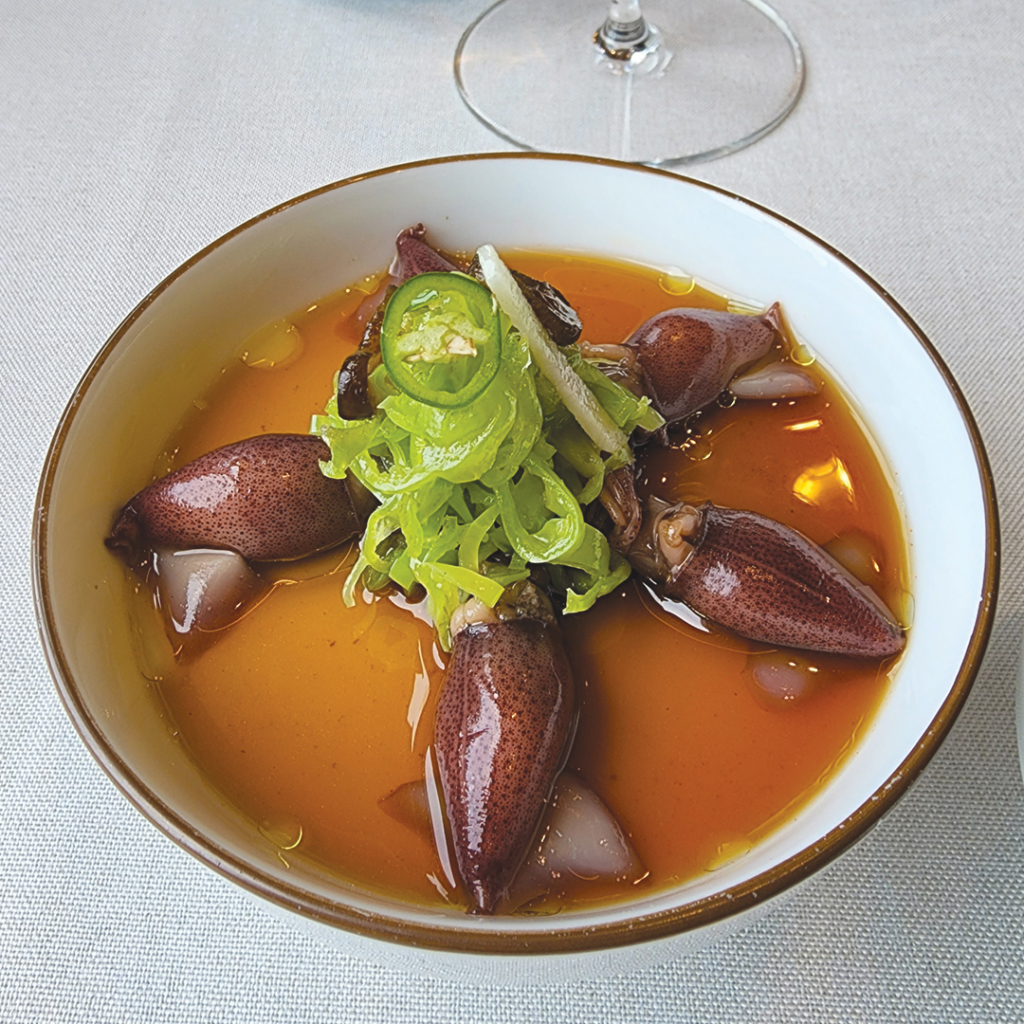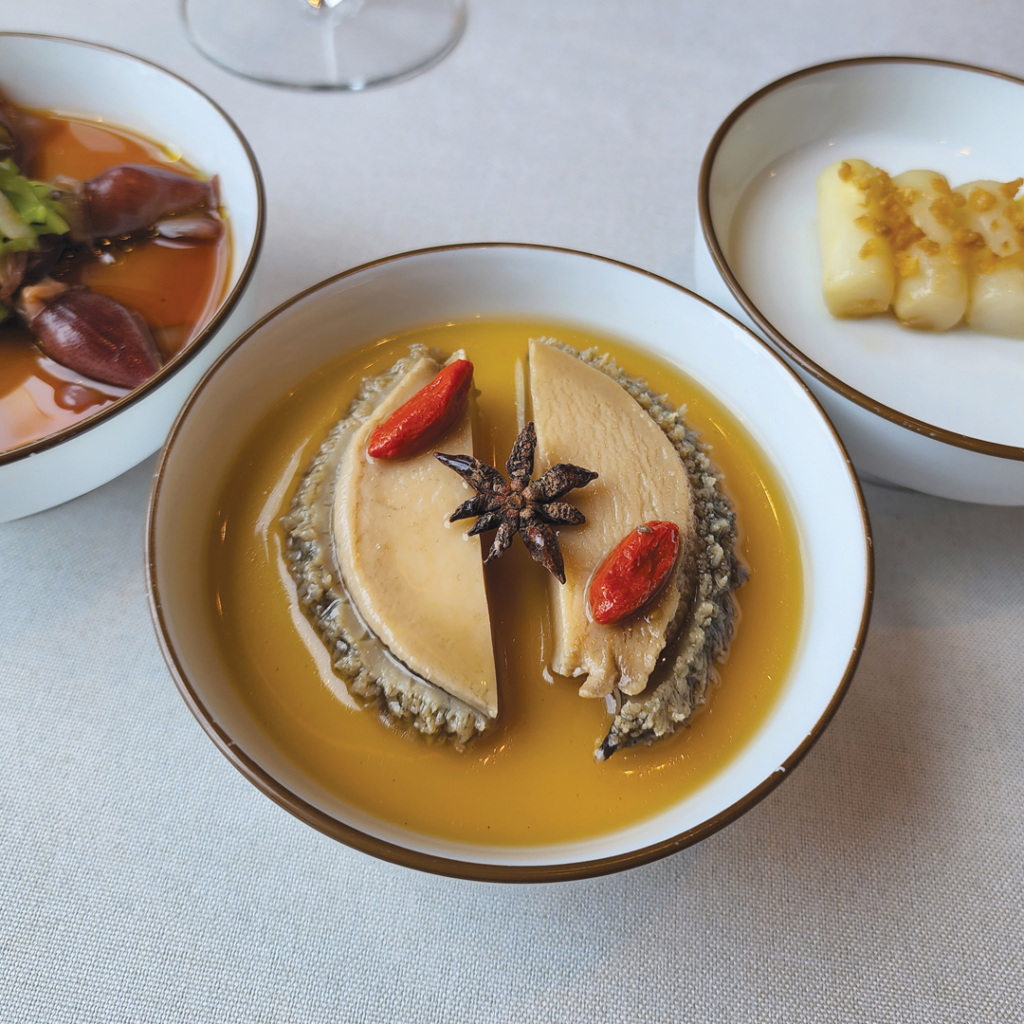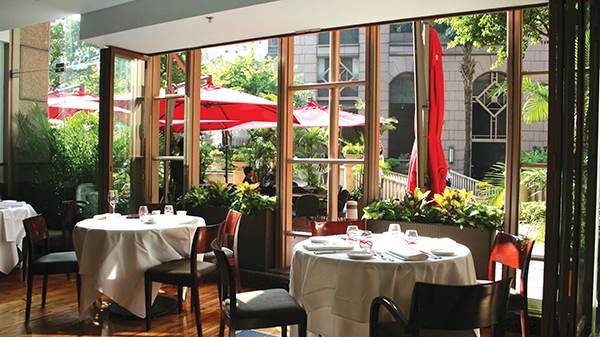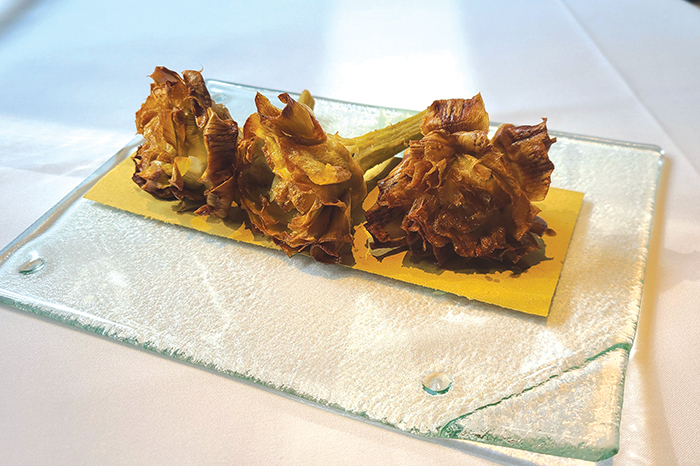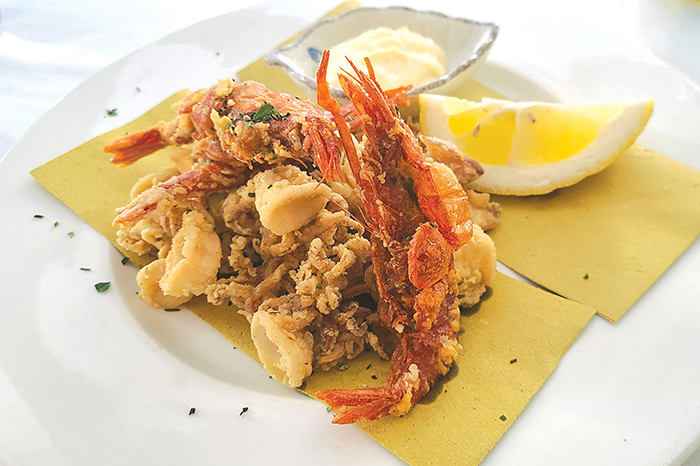Chef Wai Chung Kwan has just one clear objective in mind for A Lux, his upscale Italian / French restaurant, which nestles behind distinctive steel and glass doors just by the grand English-pillared staircase on Duddell Street in the heart of Central.

In essence, regardless of whether they are enjoying a quick lunch or a more leisurely dinner, he wants to transform the way his ever-growing number of famously loyal patrons engage with Italian and French cuisine. Expanding on this, he says: “My mission is to bring a truly authentic pasta experience to Hong Kong”.

A man of his word, the menu he offers within the 60-seat restaurant majors on pasta dishes, all served on distinctive wide and shallow ceramic platters. Adding to the ambiance is a series of thoughtfully chosen oil on canvas artworks, all help to bring a modish Mediterranean feel to the restaurant’s distinctly downtown Hong Kong setting.

And then there is its interior. All swathed in green and blush pink velvet, gilded gold-plated metals and light and seamless wood parquet. While the windows are bare, they are fetchingly accented with lamp posts and an etched water fountain. The lighting overall meanwhile, remains artfully subdued, bestowing glamour and a sense of having suddenly been relocated to somewhere rather special. Sharing the intent behind this, Chef Chung says: “When anyone enters, I want them to feel they have left Hong Kong far behind them”.

In terms of the food itself, to woo his patrons into trying something new, Chung has personally crafted a tasting menu of “secret” handmade pasta. Available as a tempting alternative to the restaurant’s more conventional set lunch and dinner menus, this mystery pasta changes from day to day.

This begins with Gnocchi, asparagus, Parma ham and a cheese salad. The Gnocchi proves the perfect foil for its vegetable, meat and dairy companions, with the salty notes and slight oily aroma of the ham bestowing a pleasantly lingering aftertaste. This was then followed with Tortellini and ham broth. Here, just the smallest bite into the Tortellini is enough to release its rich filling, which delivers an eminently satisfying cavalcade of competing flavours.

With his keen mastery of how to perfectly blend ingredients, textures and tastes, even the chef’s pasta – a foodstuff often merely deployed to provide bulk – is truly remarkable, perfectly chewy and never relegated to a supporting role in any dish. Indeed, once you’ve been spoilt by Chef Chung’s handmade pasta, you may never again settle for shop-bought.

It was then on to the mains, with much anticipated Chitarra, carabineros prawn, tomato and basil opening the proceedings. A distinctly square-surfaced take on pasta, Chitarra also
boasts a complex flavour and an enchanting synergy with the accompanying sauce. Chef Chung confesses the chittara owes much of its chewiness to his discrete addition of just the right amount of durum wheat flour.

Next to the table is Pappardelle, mushroom ragout and truffle cream. The freshly made pappardelle boasts a rich egg flavour. This is soon followed by another standout-Fettuccine, wagyu beef cheek and shaved truffle.

Reassuringly flat and thick, the fettuccini has a passing resemblance to the tagliatelle favoured in northern Italy. Chef Chung is insistent that only the finest Australian A5 Wagyu beef cheek can truly embody his individual take on this alluring culinary creation. Its inclusion, together with the rich gravy and the premium handmade fettuccine, make for a heady combination, one that forms a rare treat for the palate. And that’s before you even begin to engage with the fresh black diamond truffle slices that both garnish and crown this singular yet multi-sensory indulgence.
If you hanker for fine Italian and French cuisine, seamlessly segueing between the experimental and the traditional, then A Lux has to make your must eat list, factoring in the attentive craftsmanship of Chef Chung, the superb service and the immensely relaxing and welcoming vibe.
A Lux, Level M2, 13 Baskerville House, Duddell Street, Central.
+852 2663 9938
(Text: Joseff Musa Photos: A – Lux)



